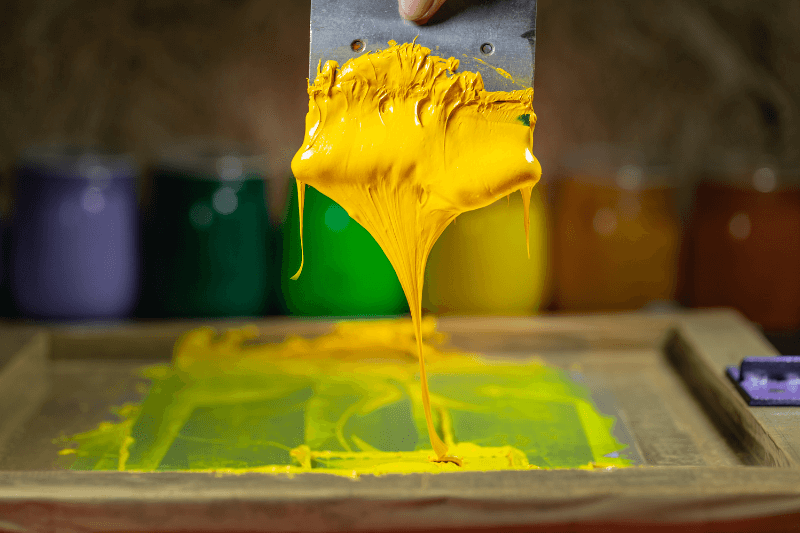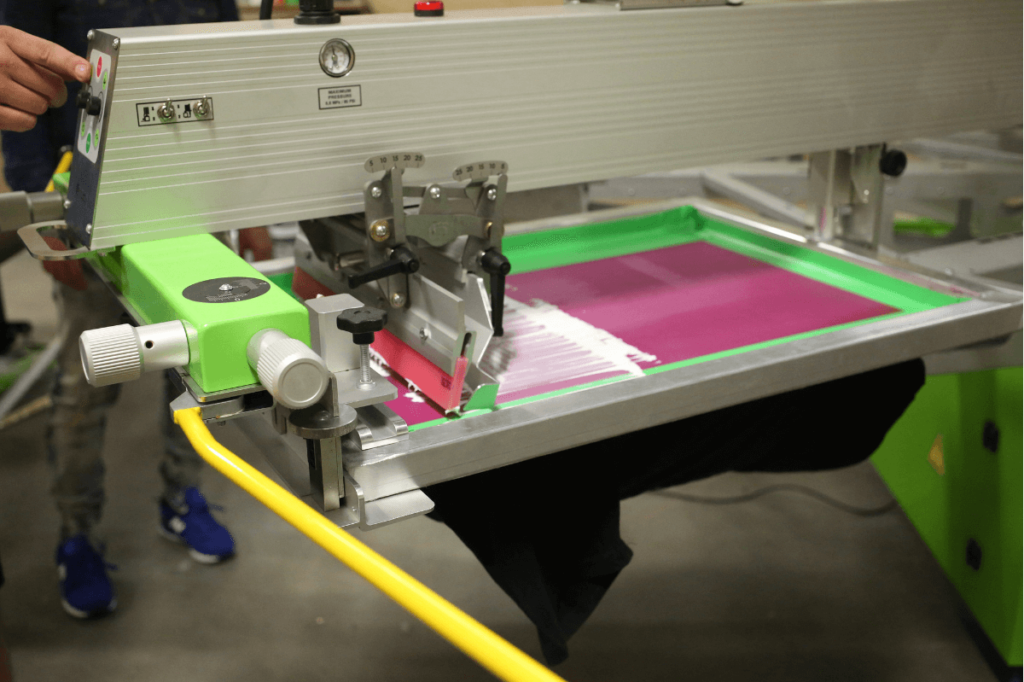Screen printing evolved from the ancient art of stenciling, which occurred in the late 19th century, and over time, with modifications, the method has evolved into an industry.
History of Screen Printing
In the nineteenth century, screen printing remained a simple process that used fabric, such as stretched over a wooden frame, as a means of holding the stencil in place while printing. Only in the twentieth century did the process become mechanized, usually for printing graphic posters or packaging and fabrics.

Initially, although it was not a well known process, screen printing bridged the gap between manual production and automatic printing, which was much more expensive. It quickly transitioned from hand production to mass production, especially in the United States, and as a result opened up a whole new field of printing capabilities that transformed the advertising industry.
Today, it has become a very sophisticated process using advanced fabrics and inks combined with computer technology. Screen printing is often used as an alternative to other processes, such as offset printing. As a printing technique, it can print images onto almost any surface such as paper, card, wood, glass, plastic, leather or any fabric. iPhones, solar cells and hydrogen fuel cells are all products of screen printing – they would not exist without this printing process.

Screen Printing and Production
Screen printing is a technique that involves the use of a woven screen to support a stencil of blocking ink to receive the desired image.
The screen stencil forms an open mesh area that presses ink or other printable material, through the mesh, onto the substrate (the item that will receive the image), creating a sharp-edged image.
The squeegee moves over the screen stencil, forcing the ink through the mesh and wetting the substrate as the squeegee moves. As the screen bounces away from the substrate, the ink remains in place. Basically, it is the process of applying ink to a substrate using a screen stencil, whether it is a t-shirt, poster, sticker, vinyl, wood, or other material.

Screen printing is sometimes referred to as screen printing. One color is printed at a time, so several screens can be used to create a multi-color image or design.
When and where is screen printing used?
Screen printing is most often associated with T-shirts, lanyards, balloons, bags and merchandise, but the process can also be used to apply latex to scratch cards for promotional printing or for a decorative printing process called spot UV.
All of these use the same squeegee and screen process, and then the clear coat is exposed to UV radiation lamps for drying.

